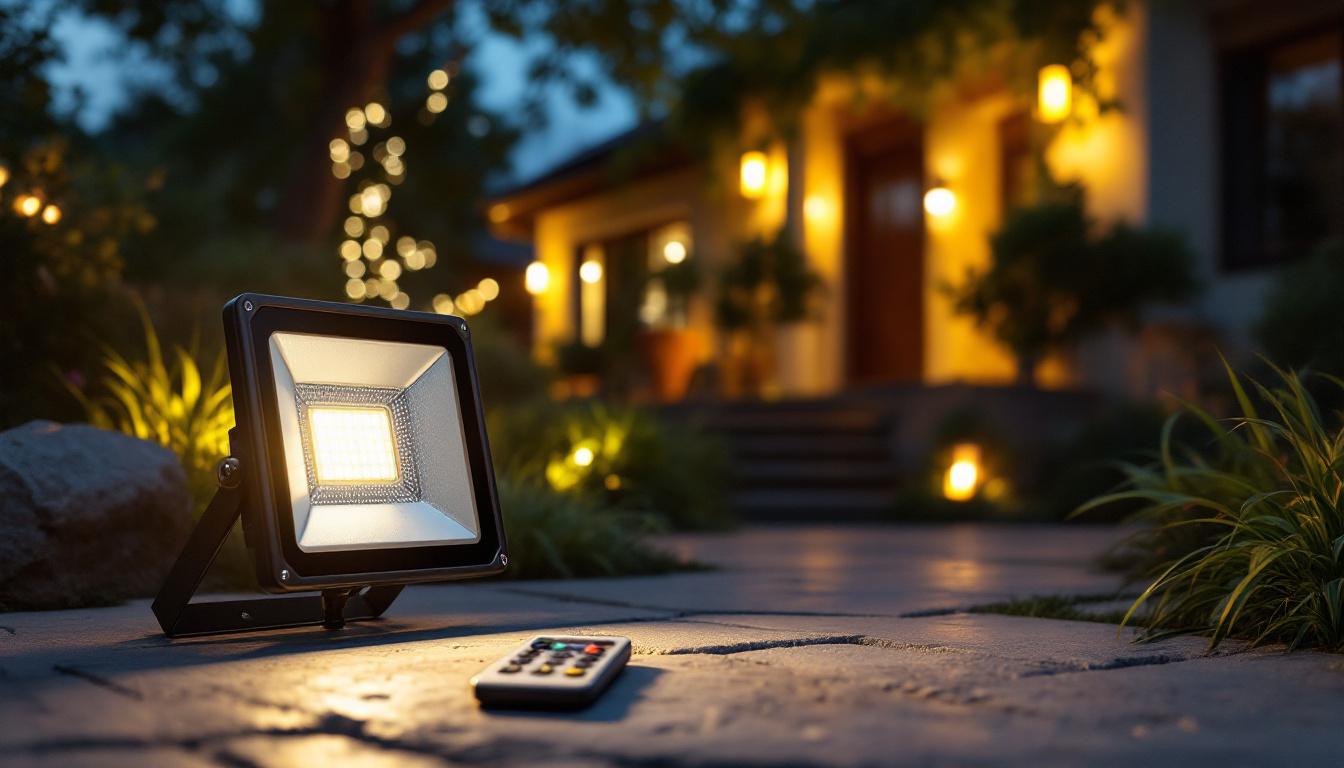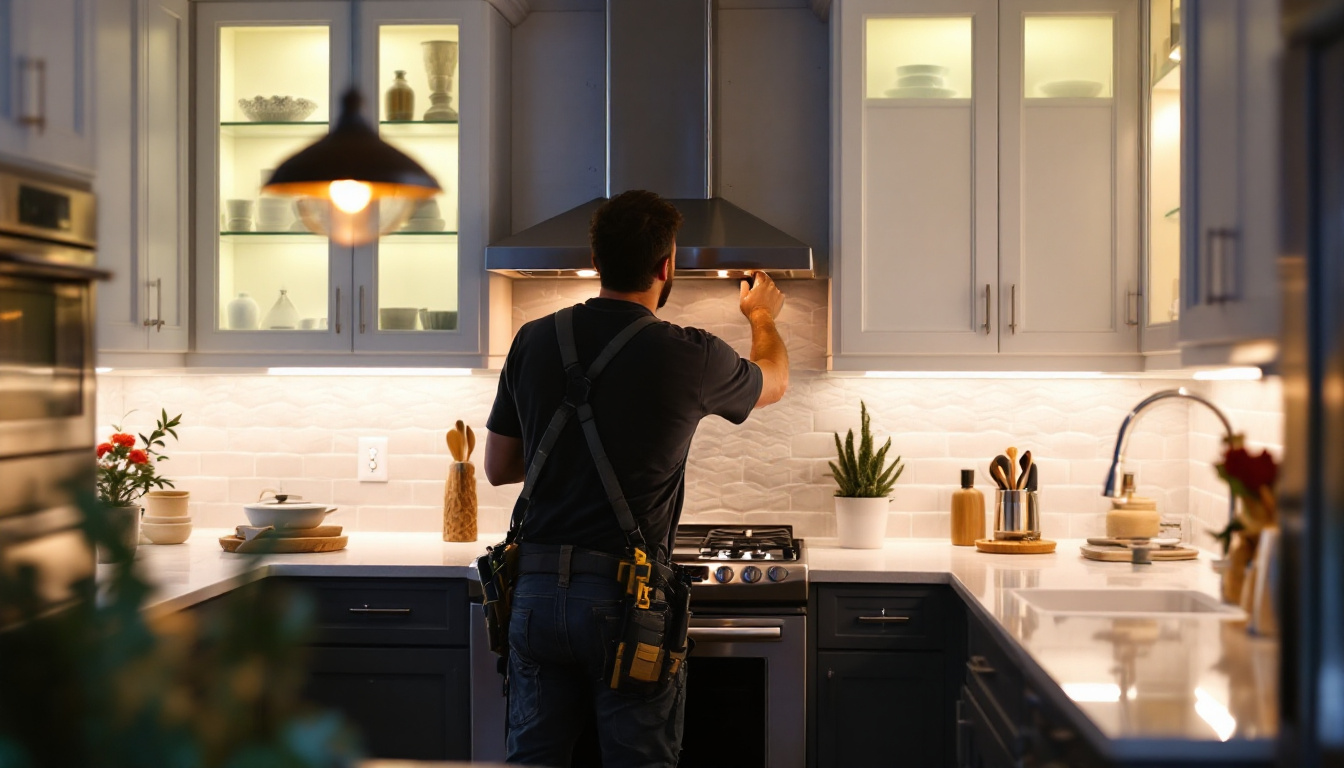
As the demand for sustainable energy solutions continues to rise, solar-powered flood lights have become an essential tool for lighting contractors. These innovative fixtures not only provide illumination but also contribute to energy conservation and cost savings. This article delves into the secrets of mastering solar-powered flood lights with remote controls, offering insights that can enhance your service offerings and client satisfaction.
Solar powered flood lights are designed to harness sunlight and convert it into electricity, which is then used to power LED bulbs. These lights are equipped with solar panels, batteries, and sensors that allow for automatic operation. Understanding the components and functionality of these lights is crucial for any lighting contractor.
The primary components of solar powered flood lights include the solar panel, battery, LED light, and the control system. The solar panel captures sunlight during the day and converts it into electrical energy. This energy is stored in the battery, which powers the LED light at night. The control system, often equipped with a remote, allows users to manage settings such as brightness and timer functions. Additionally, many modern solar flood lights come with motion sensors that can detect movement, ensuring that the lights only activate when needed, further conserving energy and extending battery life.
One of the most significant advantages of solar powered flood lights is their energy efficiency. By relying on renewable energy, these lights reduce electricity costs and lower carbon footprints. Additionally, they are easy to install and require minimal maintenance, making them a practical choice for contractors. Furthermore, the remote control feature enhances usability, allowing clients to adjust settings without needing to physically access the light fixture. Another noteworthy benefit is their portability; since they do not require wiring, these lights can be relocated easily, making them perfect for temporary setups such as outdoor events or seasonal decorations.
Solar powered flood lights can be used in various applications, including residential, commercial, and industrial settings. They are ideal for illuminating driveways, gardens, parking lots, and construction sites. Their versatility makes them a valuable addition to any contractor’s portfolio, catering to diverse client needs. In residential areas, they can enhance security by illuminating dark corners and pathways, deterring potential intruders. In commercial settings, they can be used to light up signage or outdoor seating areas, creating a welcoming atmosphere for customers. Moreover, in industrial applications, these lights can improve safety by ensuring that work areas are well-lit, reducing the risk of accidents during nighttime operations.
Selecting the appropriate solar powered flood light for a project involves considering several factors. Contractors must assess the specific requirements of each installation to ensure optimal performance and client satisfaction.
When choosing a solar powered flood light, it is essential to evaluate the light output, typically measured in lumens. Higher lumen ratings indicate brighter lights, which may be necessary for larger areas or spaces requiring enhanced security. Additionally, understanding the coverage area is crucial; contractors should select lights that provide adequate illumination for the intended space without creating dark spots.
The battery capacity of solar powered flood lights directly impacts their performance. A higher capacity battery can store more energy, allowing the light to operate for extended periods, especially during cloudy days or in areas with limited sunlight. Contractors should also consider the efficiency of the solar panel, as this determines how effectively the light can recharge during the day.
Solar powered flood lights must withstand various weather conditions, making durability a critical factor. Look for lights constructed from weather-resistant materials that can endure rain, snow, and extreme temperatures. Additionally, features such as tempered glass lenses and corrosion-resistant finishes can enhance the longevity of the fixtures.
Proper installation is vital for the performance and longevity of solar powered flood lights. Contractors should follow best practices to ensure that the lights function optimally and meet client expectations.
For solar powered flood lights to operate effectively, the solar panels must be positioned to receive maximum sunlight exposure. This often means installing them in open areas free from obstructions such as trees or buildings. Contractors should also consider the angle of the solar panel; tilting it towards the sun can enhance energy absorption, especially during winter months when the sun is lower in the sky.
While many solar powered flood lights are designed for easy installation, ensuring proper wiring and connectivity is essential. Contractors should follow manufacturer guidelines to connect the solar panel, battery, and LED light correctly. Additionally, using weatherproof connectors can help prevent corrosion and ensure long-term reliability.
After installation, testing the solar powered flood lights is crucial to ensure they function as intended. Contractors should verify that the lights turn on and off at the appropriate times and that the brightness levels meet client expectations. Making adjustments to the angle of the solar panel or the positioning of the light fixture may be necessary to achieve optimal performance.
The integration of remote control features in solar powered flood lights adds significant value for users, allowing them to customize their lighting experience easily. Understanding these features can help contractors better serve their clients.
Remote controls for solar powered flood lights typically offer various functions, including on/off switches, brightness adjustments, and timer settings. Familiarizing oneself with these features enables contractors to provide clients with comprehensive guidance on how to use their new lighting systems effectively.
The convenience of remote control operation cannot be overstated. Clients can adjust their lighting without needing to climb ladders or access hard-to-reach areas, enhancing safety and ease of use. This feature is particularly beneficial for larger properties or commercial installations where multiple lights may be in operation.
Contractors should take the time to educate clients on how to use the remote control effectively. Providing a brief demonstration during the installation process can empower clients to make the most of their solar powered flood lights. Additionally, offering written instructions or video tutorials can serve as helpful references for clients after the installation is complete.
To maintain the efficiency of solar powered flood lights, regular cleaning of the solar panels is essential. Dust, dirt, and debris can accumulate on the surface, reducing sunlight absorption. Contractors should recommend cleaning the panels periodically with a soft cloth and mild soap to ensure they remain free of obstructions. Additionally, inspecting the fixtures for any signs of damage or wear can help identify potential issues before they escalate.
Contractors should be familiar with common issues that may arise with solar powered flood lights, such as dim lighting or failure to turn on. These problems can often be traced back to inadequate sunlight exposure, low battery capacity, or faulty connections. Educating clients on how to troubleshoot these issues can enhance their satisfaction and reduce the need for service calls.
While many issues can be resolved through basic troubleshooting, some problems may require professional assistance. Contractors should advise clients on when to seek help, such as in cases of electrical malfunctions or significant damage to the light fixtures. Providing clients with a reliable point of contact for service can foster trust and encourage repeat business.
The landscape of solar powered flood lighting is continually evolving, with new technologies and trends emerging. Staying informed about these developments can help contractors remain competitive and offer cutting-edge solutions to their clients.
As solar technology continues to advance, contractors can expect improvements in efficiency and performance. Innovations such as higher-capacity batteries, more efficient solar panels, and smart technology integration are on the horizon. These advancements will enable solar powered flood lights to operate more effectively and provide enhanced features for users.
The growing trend towards smart home integration presents exciting opportunities for solar powered flood lights. Many manufacturers are developing products that can connect with home automation systems, allowing users to control their lighting through smartphones or voice commands. Contractors who embrace these technologies can offer clients greater convenience and customization options.
The push for sustainability is driving an increased demand for solar powered solutions across various sectors. As more clients seek environmentally friendly options, contractors who specialize in solar powered flood lights will find themselves in a favorable position. By promoting the benefits of these lights, contractors can attract eco-conscious clients and expand their market reach.
Mastering solar powered flood lights with remote controls is an invaluable skill for lighting contractors. By understanding the components, installation techniques, and maintenance requirements, contractors can enhance their service offerings and provide clients with effective, sustainable lighting solutions. As the industry continues to evolve, staying informed about trends and advancements will ensure that contractors remain at the forefront of this growing market.
Embracing the secrets of solar powered flood lights not only benefits contractors but also contributes to a more sustainable future for the lighting industry. By prioritizing energy efficiency and client satisfaction, contractors can build lasting relationships and thrive in an increasingly competitive landscape.
Ready to elevate your lighting game with the most efficient solar powered flood lights? At LumenWholesale, we provide lighting contractors like you with the highest quality, spec-grade lighting products at prices that can’t be beaten. Say goodbye to local distributor markups and hello to a vast selection of reliable, high-performance lighting that meets the strictest industry standards. With our commitment to affordability and convenience, you’ll enjoy free shipping on bulk orders, ensuring you get the premium lighting you need at the best value. Don’t compromise on quality or price. Wholesale Lighting at the Best Value is just a click away. Make the smart choice with LumenWholesale and light up your projects with confidence.

Discover innovative strategies to ensure your lighting projects stand the test of time.

Discover the essential guidelines for lighting contractors when working with amber color light.

Discover how light-sensored outdoor lights can revolutionize your exterior lighting design.

Discover essential tips and best practices for lighting contractors to master in-cabinet lighting installations.